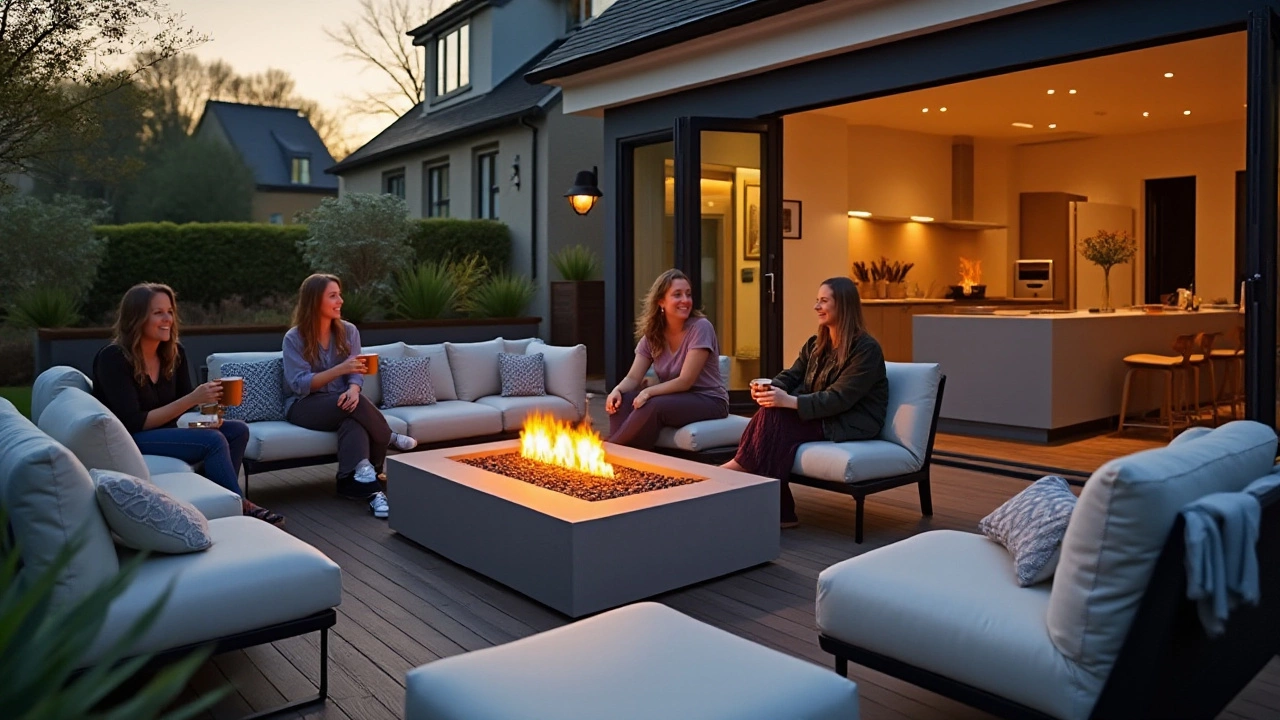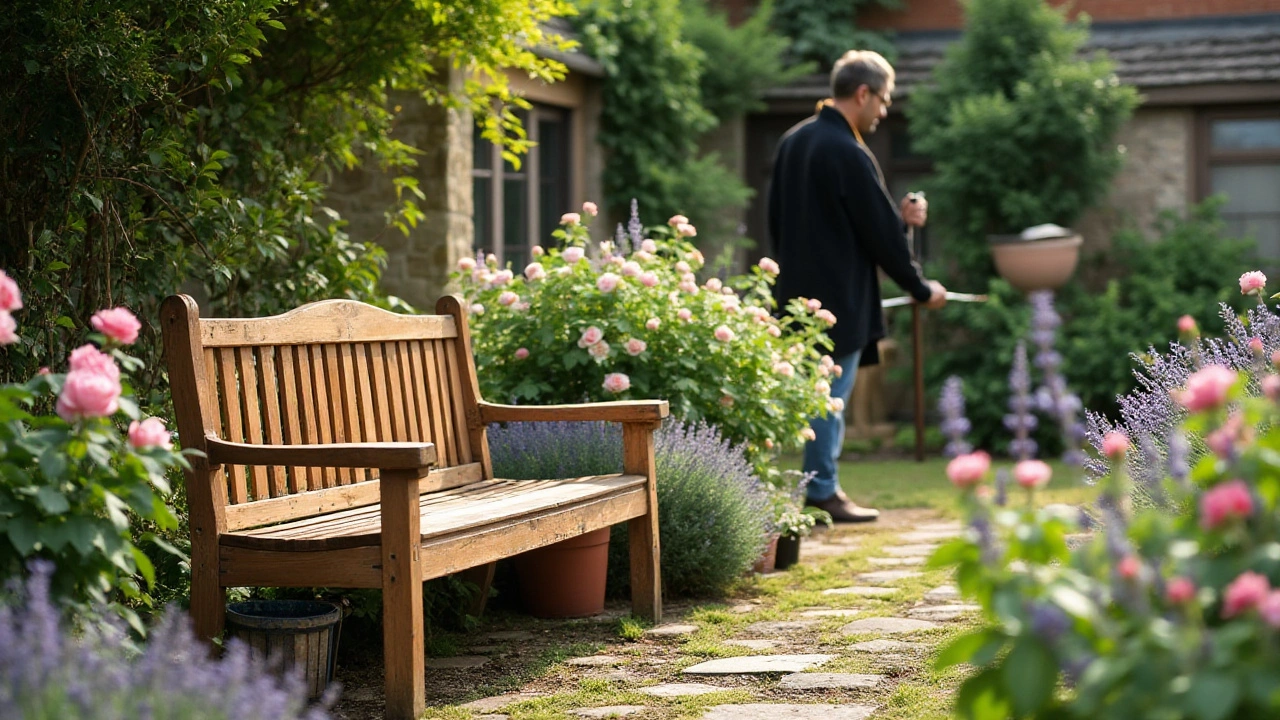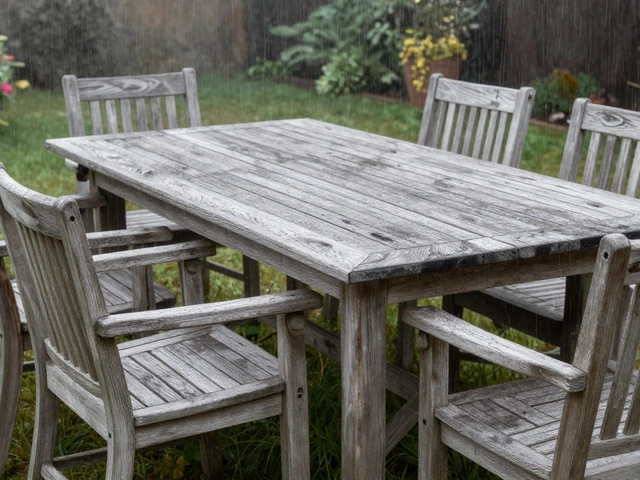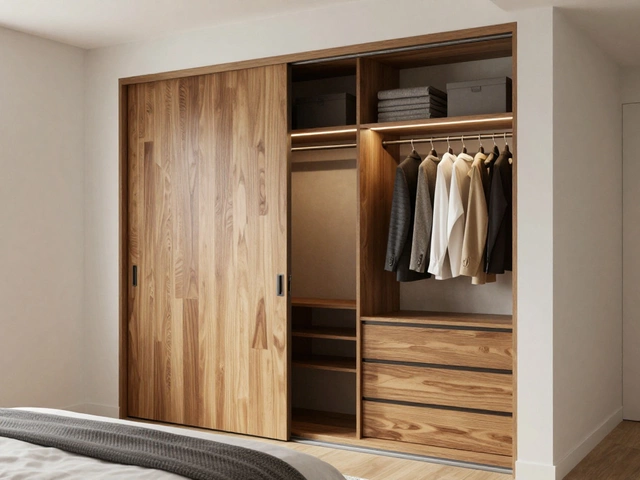Transforming a garden into a beloved outdoor space often hinges on choosing the right furniture. While style and comfort are key, ease of maintenance is a factor that can't be overlooked. The best materials not only withstand the elements but do so with little upkeep, leaving you more time to enjoy your patio.
This guide dives into a variety of materials, each offering unique benefits that extend beyond just durability. From weather-resistant metals to hardy, synthetic fabrics, there are options that suit both your lifestyle and local climate. Practical insights and simple care regimes can extend the life of your furniture, ensuring it looks pristine through every season.
- Choosing the Right Material
- Care Tips and Tricks
- Common Issues and Solutions
- Styling Your Outdoor Space
Choosing the Right Material
When it comes to crafting an inviting outdoor space, the choice of outdoor furniture is pivotal. One of the first decisions to make is the material, as it significantly influences both aesthetics and maintenance needs. Among the most favored materials are aluminum, teak, and synthetic wicker, each offering distinctive advantages. Aluminum, for instance, is celebrated for its lightweight yet robust nature, and it's highly resistant to rust. This makes it an ideal choice for coastal areas where salty air might corrode other materials. Teak, on the other hand, is lauded for its naturally weather-resistant properties, owing to its high oil content, which acts as a natural barrier against moisture. However, it does require occasional oiling to maintain its golden hue. Meanwhile, synthetic wicker blends the timeless appeal of traditional wicker with modern durability. Made from polyethylene, it's designed to withstand various climates, from intense sunlight to heavy rain, without fading or unraveling.
Another crucial aspect is how each material responds to the climate in your area. For example, if you reside in an area with harsh winters, it might be wise to opt for materials like wrought iron, which can endure snow and icy conditions with only minor upkeep. This doesn't mean you have to forsake style; many wrought iron pieces come with intricate designs that can truly upgrade any garden space. While the weight can be a drawback, it ensures that your furniture remains stable during high winds. Moreover, a simple powder-coating now available on many iron pieces can reduce corrosion, prolonging the life of your furnishings.
In today's environmentally conscious world, the eco-friendliness of materials is a growing concern. Many manufacturers are now producing garden furniture from recycled sources. For instance, some high-density Polyethylene (HDPE) plastics, often used in contemporary sofas and chairs, originate from post-consumer waste such as milk jugs and bottles. This sustainable option not only reduces your carbon footprint but also provides products that are remarkably durable and low-maintenance. As an added bonus, they frequently come in vibrant colors, maintaining their brightness despite years of sun exposure.
It's important to remember that every material has its pros and cons. Glass-topped tables can look sleek and modern, but they require frequent cleaning to look presentable and can be prone to scratching. Similarly, steel may offer industrial appeal, but it can become uncomfortably hot to the touch on sun-drenched days. When considering your options, think not only about the initial visual impression but also how these materials will integrate with your lifestyle in the long run. A well-thought-out choice will blend seamlessly into your garden, offering comfort and beauty with minimal effort needed to maintain it. According to a recent survey by the home improvement guide Houzz, about 70% of homeowners prefer materials that balance style with low upkeep for their outdoor spaces.
"The right outdoor furniture can set the mood for countless family gatherings and personal moments," notes interior designer Emily Henderson. "Selecting a material that you won't find burdensome to care for makes enjoying your outdoor space easy and carefree."

Care Tips and Tricks
Taking care of your outdoor furniture might seem like a daunting task, but with a few insider hacks, you can keep your garden looking chic and fresh all year round. Understanding the specific needs of different materials is step one. For instance, metal furniture, which is often made from aluminum or steel, is designed to resist rust. However, a periodic wipe-down with a soapy cloth can prevent pollen buildup and watermarks. Don’t underestimate the impact of a monthly clean; it not only maintains appearance but blocks the gradual wear and tear caused by nature's elements. Wood furniture, on the other hand, requires a bit more attention. Teak and cedar are popular because of their resilience, yet they benefit from an annual oil treatment to keep them nourished and vibrant.
Moving on to synthetic wicker, made usually from polyethylene, it promises both style and durability. But even the toughest synthetic can suffer in the sun, leading to a weakening of fibers over time. A tip here is to use fabric spray uv protectants at the start of every summer. Covering furniture during off-season months can significantly extend the lifespan, preventing not only UV damage but deterring wildlife from setting up home. On the topic of fabrics, cushion care is often overlooked. Opt for removable covers where possible, as they can be machine washed easily. Non-removable types can be cleaned using a soft brush and mild detergent solution, rinsed with a low-pressure garden hose.
Some might be surprised at the role vinegar plays in outdoor maintenance. A simple mix of white vinegar and water works wonders lifting mildew stains off furniture. It’s a natural and non-toxic alternative to harsh chemicals, plus it’s sitting right there in your pantry. Encouraging air flow around your garden furniture, not only with spacing but through placement in the wind path, speeds up drying time after rain, reducing the chance of mold. As Leonardo da Vinci once said,
"Simplicity is the ultimate sophistication."Keeping your maintenance routine straightforward will ensure you can enjoy your outdoor space more.
| Material | Tip | Suggestion Frequency |
|---|---|---|
| Metal | Soap and water wipe | Monthly |
| Wood | Oil treatment | Yearly |
| Synthetic Wicker | UV protectant spray | Every Summer |
| Fabric | Brush and detergent wash | As needed |

Common Issues and Solutions
When it comes to outdoor furniture, even the low-maintenance furniture can face its share of challenges. Weather is one of the biggest culprits – whether it’s relentless sun fading your vibrant pieces, or sudden rain showers that lead to rust and mildew. But don't worry, as each problem has a viable solution. For instance, furniture made from synthetic rattan is a popular choice due to its resilience, yet it is not immune to mildew if left in damp areas. To counteract this, consistently clean the surface with a mild detergent and let it air dry thoroughly. This process can significantly extend the lifespan of your beloved pieces.
Another common issue is the degradation of cushions over time. Sun and rain take their toll, leading to faded or even moldy cushions if ignored. Solution? Opt for cushions made from water-resistant fabrics and regularly clean them to prevent dirt buildup, which can cause fabric breakdown. Store cushions indoors during harsher weather seasons to keep them safe from prolonged exposure. Creating a habit of shaking or vacuuming the cushions occasionally will go a long way. Wood furniture, often coveted for its classic appeal, can suffer from dryness or cracking, especially in areas with drastic climate changes. Applying a protective oil can help maintain its sheen and moisture.
Metal furniture, known for its sleek and modern look, can rust without proper care. Choosing powder-coated metals is wise, as these are more resistant to corrosion. But should rust appear, a simple sand and repaint job can bring it back to life. Taking proactive measures can be the difference between a decade of elegance or a couple of years of frustration. As Susan Deliss notes,
"The beauty of outdoor spaces lies in enjoyment, not the maintenance." Hence, understanding how to protect your investment pays dividends.Additionally, one growing trend includes using furniture covers. These are invaluable when it comes to keeping rain, dust, and sun rays away, reducing the stress on your outdoor furniture.
Finally, it’s common for any outdoor furniture to lose some of its luster. Routine cleaning with gentle cleansers plays an irreplaceable role in preserving aesthetics. Underneath that dust might still hide the shine you originally fell in love with. Use soft brushes to avoid scratches and maintain that polished look year-round. Keeping a regular cleaning schedule, perhaps once a month, can help avoid the accumulation of grime and make each maintenance task more manageable. This simple practice extends the life of garden pieces while ensuring they remain a charming feature of your home. Investing a little time consistently saves a lot of hassle in the long run, and ensures your outdoor haven always welcomes you warmly.

Styling Your Outdoor Space
When it comes to creating a stunning outdoor haven, styling your outdoor space isn't just about placing a few pieces of furniture around. It's about crafting an environment that resonates with your personal style and complements the natural beauty of your garden. To start, consider the color palette. Harmonizing with the existing hues of your garden, such as the greens of foliage or the warm tones of flowers, brings a cohesive look to the space. You may choose furniture with subtle earth tones or bold colors that pop against a natural backdrop. Creating a comfortable lounging area with plush cushions and throws can add texture and warmth, making the space inviting. Layering these with weather-resistant fabrics ensures they withstand outdoor conditions while still appearing plush and comforting.
Lighting plays a crucial role in transforming your garden furniture section into a functional evening retreat. String lights draped overhead or lanterns placed strategically on side tables can create a wonderful ambiance, perfect for summer nights. Solar-powered options are increasingly popular due to their environmentally friendly nature and ease of use, eliminating the need for complex electrical setups. Consider the words of renowned landscape architect Thomas Church who said, “Gardens are for people,” emphasizing that design should prioritize human experience and comfort, blending beauty with usability
- Thomas Church. Arranging furniture in clusters can encourage conversation and create distinct zones within the space, such as a dining area or an intimate corner for reading.
In terms of textures and materials, using a variety of surfaces can enrich the visual appeal and tactile experience of your garden area. Mix and match materials such as metal, wood, and rattan to cater to both aesthetics and low maintenance. Incorporating natural elements like stone pavements or wooden decking can provide a rustic charm, enhancing the organic feel of your space. Adding potted plants or vertical gardens can introduce vertical interest and soften the boundaries of the sitting areas, tying the design together seamlessly. To boost the structural integrity of your layout, make sure each piece is positioned considering both function and flow, facilitating ease of movement across garden paths without hindrance.
When selecting pieces, it's worthwhile to embrace modular furniture that adapts to different settings and occasions. A modular sofa set allows for flexibility, perfect for larger gatherings or intimate family relaxation times. Add compact side tables that can hold drinks or decorative elements, maximizing utility without overwhelming the space. Don't forget to consider weather conditions prevalent in your region when styling, as some materials fare better in sun or rain. A small bistro set in wrought iron could charm a sun-drenched corner, while a teak lounge set might thrive under a shaded pergola. Ultimately, the choice of outdoor furniture should reflect both your lifestyle and the unique aesthetic you wish to cultivate in your garden sanctuary.
| Material | Weather Resistance | Maintenance Level |
|---|---|---|
| Aluminum | High | Low |
| Teak Wood | Moderate | Medium |
| Rattan (Synthetic) | High | Low |






